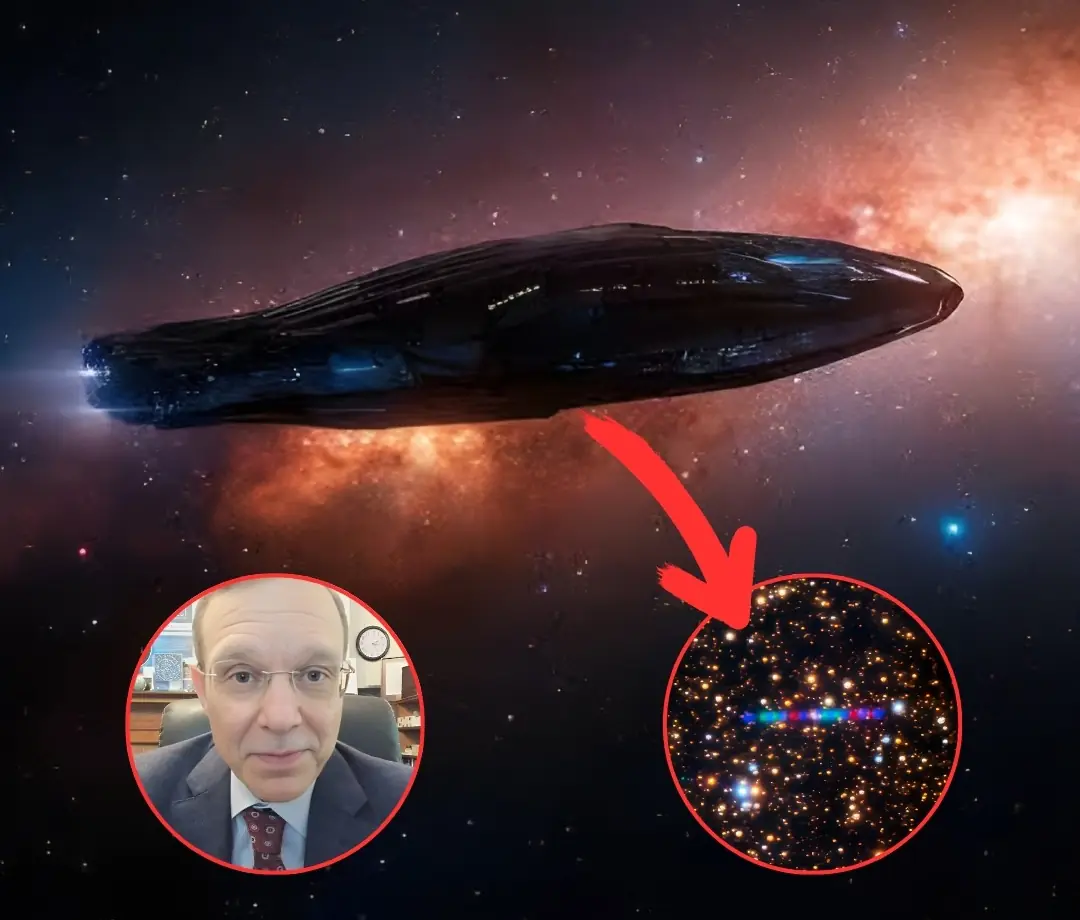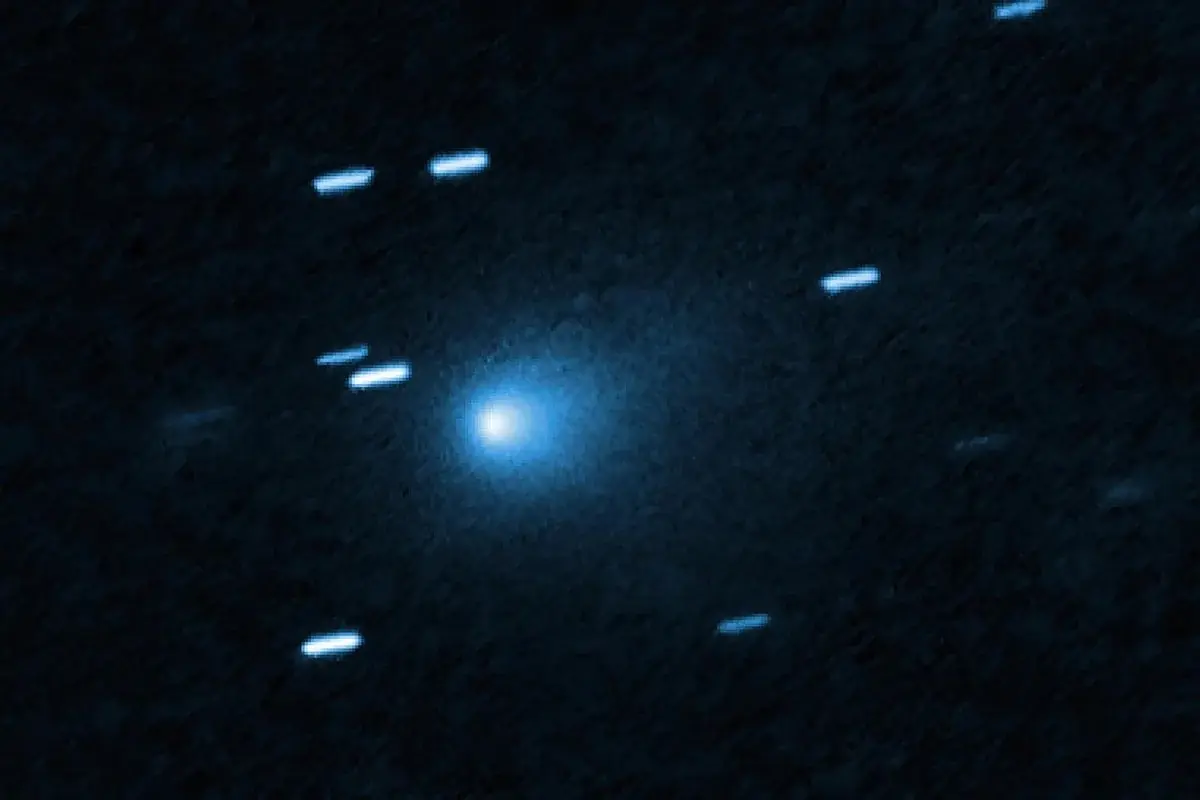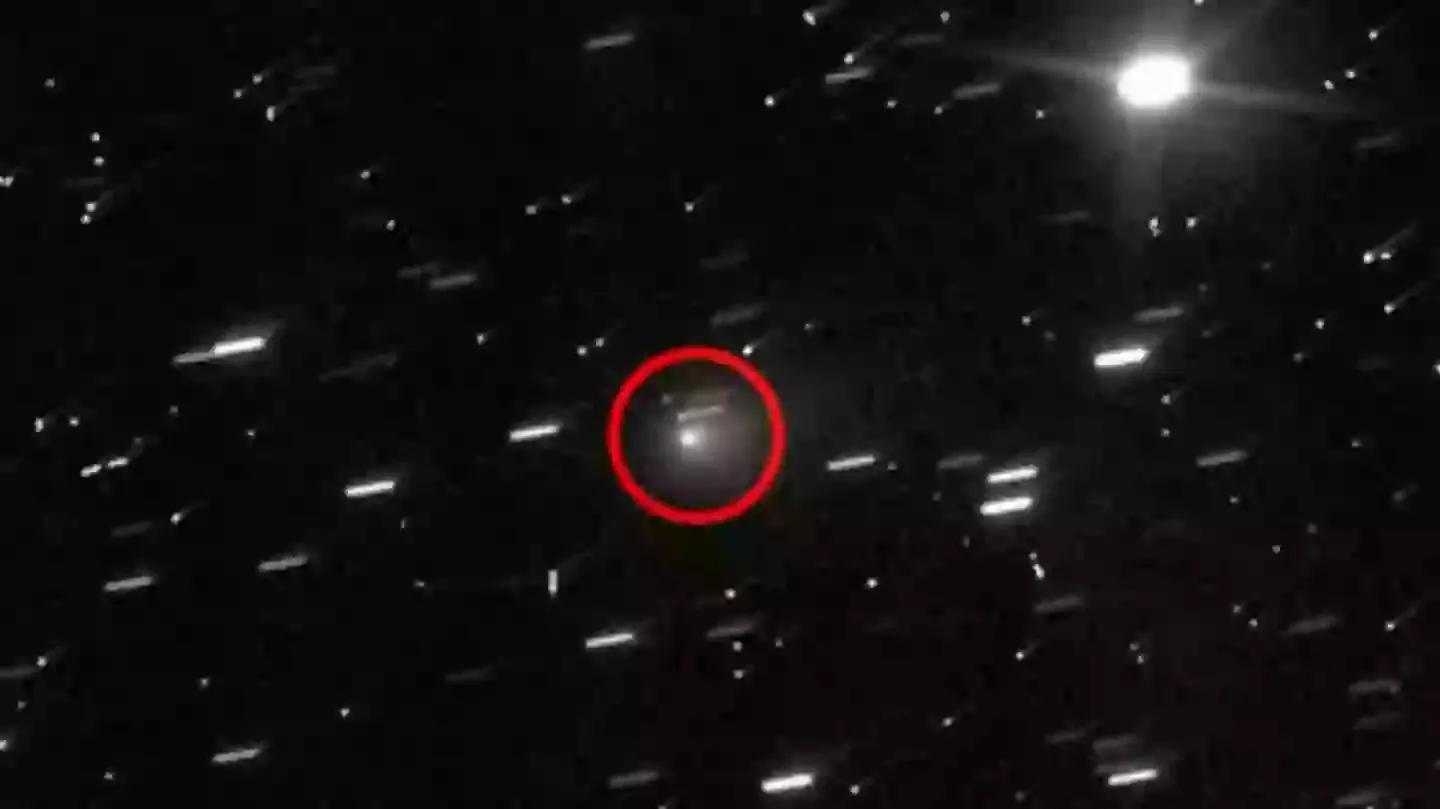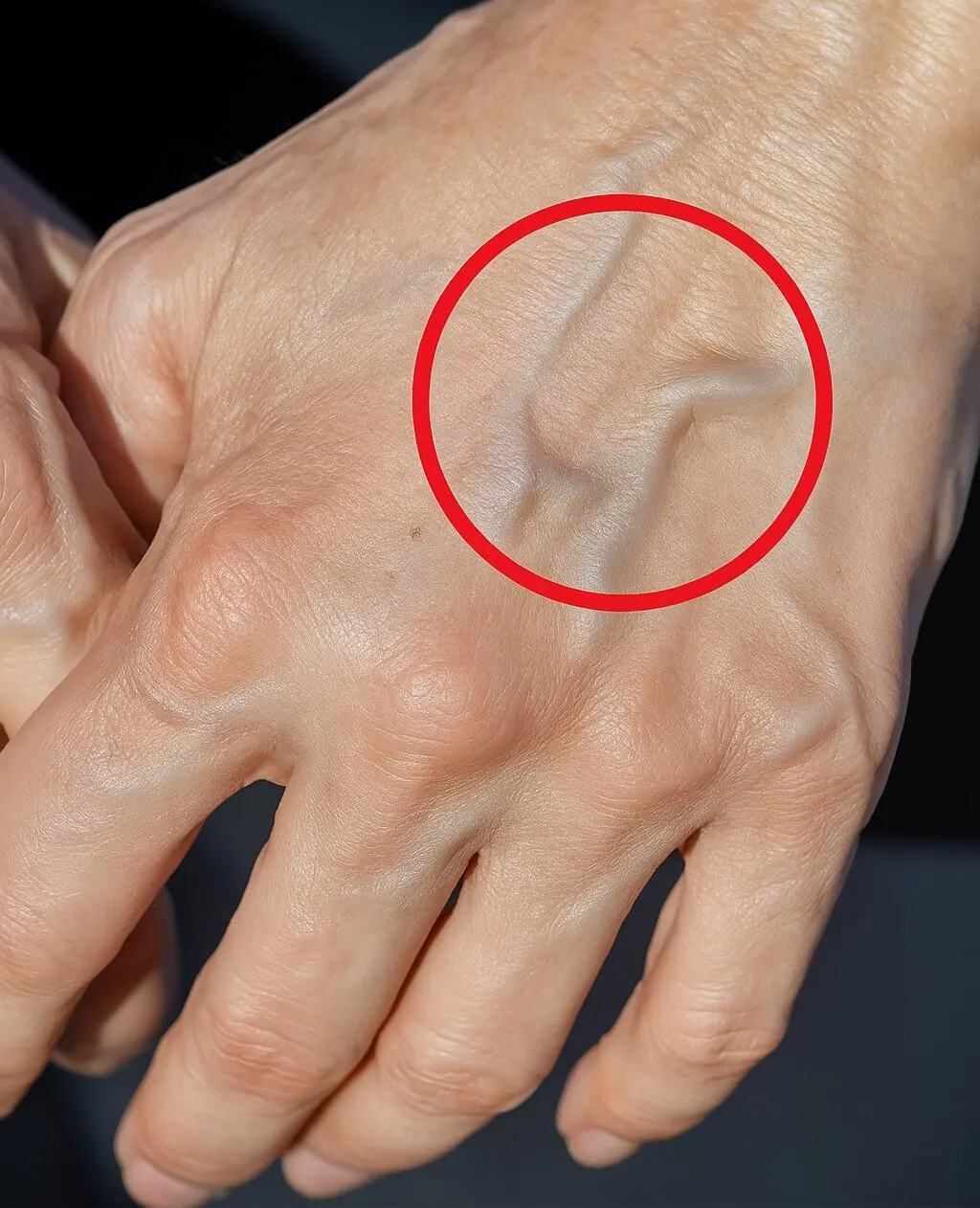
Harvard Professor Warns: Object Heading Toward Earth Could Be Something Beyond Nature
A strange and massive object is hurtling toward Earth — and it’s sparking a heated debate in the scientific community. While many researchers are calling it an ordinary comet, one leading Harvard physicist says it could be something far more unusual, possibly even artificial in origin.
The object, known as 3I/ATLAS, was first detected by NASA on July 1. Whenever a large object passes near our planet, speculation quickly swirls — is it a harmless space rock, or something designed by an advanced civilization? In this case, the answer isn’t so clear.

Why This “Comet” Doesn’t Add Up
More than 200 scientists have examined the data and concluded that 3I/ATLAS is most likely a comet. But Harvard astrophysicist Avi Loeb, known for his work on interstellar phenomena, strongly disagrees.
Loeb points out one glaring issue: the absence of a visible comet tail. “There were claims of a tail,” he explained, “but since 3I/ATLAS is accelerating and its current size is not much larger than the angular resolution of Earth-based telescopes, it is not easy to avoid fictitious elongation of the image as a result of the object's motion.”
Even more suspicious, the object shows no signs of gas emissions and follows a trajectory that aligns unusually well with the solar system’s orbital plane — behavior that is uncommon for natural comets.

The Loeb Scale and an Alarming Score
To assess its origin, Loeb applied his own metric — the “Loeb Scale” — which rates interstellar objects from 0 (definitely natural) to 10 (definitely technological, such as an alien craft). 3I/ATLAS scored a 6, meaning it is more likely engineered than naturally formed.
Loeb even floated a bold theory: the object could be a mothership releasing mini-probes toward Earth. “The more likely scenario from an engineering perspective involves a mothership that releases mini-probes which perform a reverse Oberth maneuver to slow down at perihelion and intercept Earth,” he wrote on his blog.
If his calculations are correct, these probes could reach Earth between November 21 and December 5, 2025. In his words: “It may come to save us or destroy us. We’d better be ready for both options and check whether all interstellar objects are rocks.”

No Tail, No Easy Answers
Images of 3I/ATLAS taken on July 4 and July 29 show no signs of the classic comet tail, further fueling speculation. To settle the debate, Loeb has suggested using NASA’s Juno spacecraft to intercept the object near Jupiter in 2026.
Meanwhile, he urges continuous monitoring: “The best we can do is monitor the sky with telescopes. It may well be that 3I/ATLAS is a natural comet. But even then, we have to check each and every interstellar object… for anomalous characteristics like non-gravitational acceleration with no cometary tail, artificial lights, or unusual shapes.”
Should Governments Prepare?
Loeb believes that if the object is not natural, governments worldwide should already be drafting a response plan. Whether 3I/ATLAS turns out to be a comet, an alien probe, or something entirely unexpected, the implications could be enormous for science — and for humanity’s future.
News in the same category


The Truth About Eating the Black Vein in Shrimp Tails

This is why you should keep the bathroom light on when sleeping in a hotel
Leaving your hotel bathroom light on at night might seem unnecessary, but it could be a small habit that makes a big difference for your comfort and safety. From preventing nighttime accidents to deterring intruders, experts say this simple tip can protec

The Mystical Gaboon Viper, Master Of Disguise And Deadly Accuracy

If You See Square Waves Forming In The Ocean, Get Out Of The Water Immediately

A Greenland Shark Born in 1620 is Still Alive Four Centuries Later

15 Things You Should Never Plug Into A Power Strip

China is Developing a Levitating Train That Could Travel From New York to Chicago in Just Two Hours

TikTok’s ‘Vabbing’ Trend Sparks Debate: Does It Attract Partners?

In Sweden, You’re Not Allowed to Leave Your Dog Alone for More Than Six Hours, Here’s the Reason

A A tendon raises up when you touch your pinky to your thumbraises up when you touch your pinky to your thumb

The Hidden Meaning Behind Leg-crossing — It’s More Than Just Comfort

The Sh0cking Truth Behind Your Ankle Bracelet And What It Reveals About You — It’s More Than Just Jewelry
For many, an ankle bracelet is just a delicate, eye-catching piece of jewelry. But behind its shimmer lies a rich tapestry of history, tradition, and hidden symbolism that stretches across cultures and centuries.

Lost Underwater City Near Noah’s Ark Site Could Rewrite Biblical History Forever
The discovery of an underwater city found by the 'resting place of Noah's Ark' is a revelation that may lead to the Bible story being re-written.

11 Heartbreaking Yet Essential Signs Your Dog May Be Nearing the End — And How to Give Them Comfort Until the Last Moment
When you notice these signs, your role transforms from caregiver to emotional anchor. This is the time to be fully present — offering touch, reassurance, and unconditional love.

Mass Panic as ‘New Baba Vanga’ Predicts Majo Disasters Striking in Just One Month
A chilling prophecy from Japan’s so-called “New Baba Vanga” has triggered widespread fear and mass trip cancellations. Tourists are now abandoning travel plans as the forecast warns of a catastrophic natural disaster hitting in early July 2025.

What Is SPAM Meat? History, Origin, Ingredients, and How It Became a Global Food Icon
SPAM — the world-famous canned meat — has been sold over 8 billion times and is loved in more than 40 countries. From its humble beginnings during the Great Depression to its role in World War II, here’s the complete story of SPAM’s origin, ingred

Scientists Reverse Aging of a 53-Year-Old’s Skin Cells to That of a 23
News Post

10 Symptoms That May Reveal Health Problems

Experts warn: Don’t swap your oven for an air fryer

Get Rid of Throat Mucus Faster With These Home Treatments (Evidence Based)

Clear Throat Mucus Fast With These Tried-and-Tested Remedies They Don’t Want You to Know

9 Warning Signs of Magnesium Deficiency You Shouldn't Ignore

Poor Postcancer Surgery Outcomes Tied to 3 Factors

Teamwork Boosts Primary Care Doc Job Satisfaction, Cuts Stress

HIV Was Successfully Eliminated from Human Immune Cells Using CRISPR Gene Editing in Landmark Study

Scientists Discover An “Off Switch” For Cholesterol—And It Could Save Millions Of Lives

How to Treat Urinary Tract Infection (UTI) Naturally According to Science

4 Common Causes of Body Pain on the Right Side

The Truth About Eating the Black Vein in Shrimp Tails

12 Subtle Vitamin D Deficiency Symptoms That Most People Ignore

What Your Heart Experiences When You Drink Energy Drinks

How to Eat Right for Your Blood Type

Eyes Full of Hope, Heart Full of Trust.

When to Worry About Veins That Appear Out of Nowhere

This is what sleeping on the left side does for our brain, stomach & glymphatic health
Sleeping position might be the last thing you think about before bed, but it can have a powerful impact on your health. Experts say that lying on your left side could improve digestion, support brain detox, ease back pain, and even enhance circulation.

I Haven’t Seen My Daughter in 13 Years — Then a Letter Arrived from a Grandson I Never Knew

This is why you should keep the bathroom light on when sleeping in a hotel
Leaving your hotel bathroom light on at night might seem unnecessary, but it could be a small habit that makes a big difference for your comfort and safety. From preventing nighttime accidents to deterring intruders, experts say this simple tip can protec